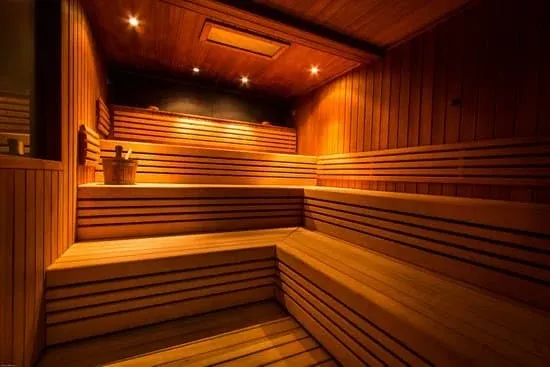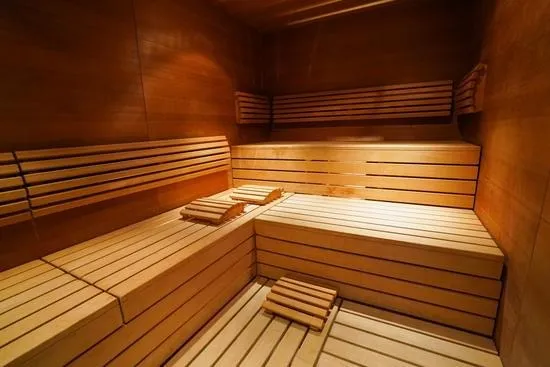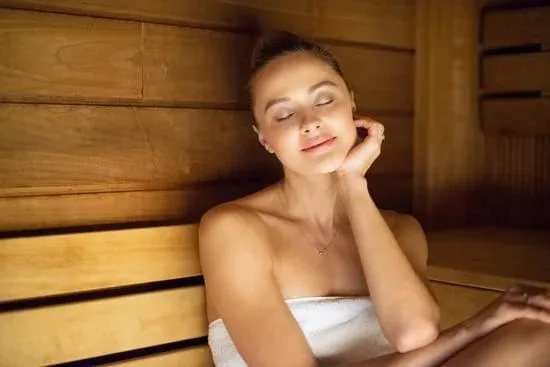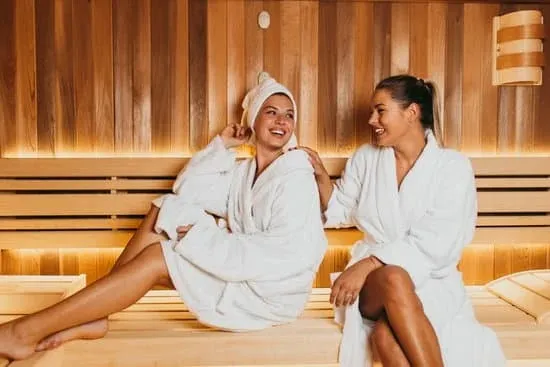When Jasmin and I first considered adding a sauna to our home, I immediately thought big. Four-person unit. Room to spread out. Space for the whole family. But Jasmin had different ideas. "It's just going to be us most of the time," she pointed out. "Why waste money and space on seats we won't use?"
She was right. After eight years of regular sauna use, I can tell you: two-person saunas hit a sweet spot that larger units often miss. They're intimate without being cramped, affordable without feeling cheap, and surprisingly versatile for such a compact design.
If you're exploring home sauna options and considering a two-person unit, let me share everything I've learned about why this might be the perfect size for your needs.
Why Two-Person Saunas Make Sense
There's something magical about the two-person sauna sweet spot. It's not just about physical dimensions—it's about how these units fit into real life.
The Intimacy Factor
Sauna time becomes couple time. There's something special about sharing that quiet, heated space with your partner. No phones, no distractions, just conversation or comfortable silence. Research from relationship psychology studies shows that couples who engage in shared wellness activities report higher relationship satisfaction.
Our sauna sessions have become some of our best conversation time. Twenty uninterrupted minutes together, away from kids, work, and screens. It's cheaper than marriage counseling and probably just as effective.
Space Efficiency
A two-person sauna typically occupies 16-30 square feet—roughly the space of a small closet. This makes them viable for:
- Master bedroom corners
- Converted walk-in closets
- Bathroom additions
- Basement niches
- Small dedicated spaces
You're not sacrificing an entire room. You're repurposing underutilized space into a wellness sanctuary.
Cost Effectiveness
Two-person units typically cost $1,500-$4,000 for quality infrared saunas, or $3,000-$7,000 for traditional models. Compare this to four-person units at $4,000-$10,000+, and the savings become significant.
Plus, operating costs scale with size. Smaller saunas use less electricity and heat faster, saving money on every session.
Versatility
Here's what surprised me: two-person saunas work great for solo use too. You have room to stretch, lie down, or shift positions. It doesn't feel claustrophobic like a one-person unit can.
When friends visit? Our two-person sauna accommodates them fine. Sure, three is a crowd, but for short sessions, it works. We've had more intimate conversations in our cozy sauna than we ever would have in a cavernous four-person unit.
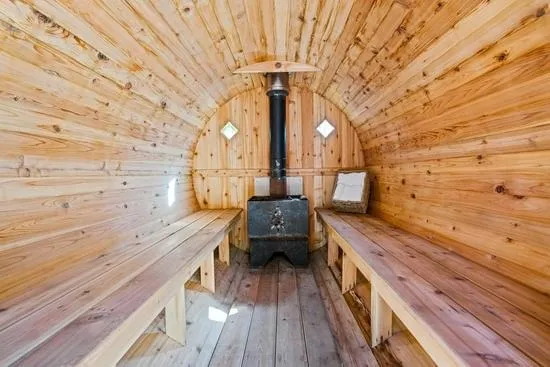
Ideal Configurations for Two-Person Saunas
Not all two-person saunas are created equal. The internal layout significantly impacts user experience.
Facing Bench Configuration
Layout: Benches on opposite walls, users face each other
Typical dimensions: 4x4 or 4x5 feet
Best for: Conversation, eye contact, couples who like interaction
Pros:
- More intimate feel
- Natural conversation position
- Can stretch legs out
Cons:
- Feet touch in the middle (some love this, others not so much)
- Less private if you prefer parallel seating
L-Shaped Configuration
Layout: Benches on adjacent walls forming an L
Typical dimensions: 4x5 or 5x5 feet
Best for: Flexibility, varying group sizes
Pros:
- Can sit facing, perpendicular, or both on one bench
- Accommodates three people in a pinch
- Versatile for solo or couple use
Cons:
- Slightly less space-efficient
- Corner can feel wasted
Side-by-Side Configuration
Layout: One longer bench, users sit alongside
Typical dimensions: 3x6 or 4x6 feet
Best for: Narrow spaces, couples who prefer parallel seating
Pros:
- Fits narrow spaces
- Can lie down if desired
- More private feeling
Cons:
- Less face-to-face interaction
- Longer footprint may not fit some spaces
We went with facing benches. That eye-contact, knees-almost-touching position creates the intimate atmosphere we wanted. Your preference might differ—and that's fine. Think about how you and your partner naturally interact.
Key Features to Consider
When shopping for two-person saunas, these features matter most:
Bench Height and Depth
Comfortable benches make or break the experience. Look for:
- Seat depth: 18-20 inches minimum for comfortable sitting
- Bench height: 18-19 inches from floor (chair height)
- Upper bench option: Some models include a second level for heat variation
- Backrest: Built-in or adjustable backrests enhance comfort significantly
Door Size and Swing
In smaller saunas, door design matters more. Consider:
- Inward vs outward swing (outward saves interior space)
- Glass panels for openness or solid wood for traditional feel
- Door width—at least 24 inches for comfortable entry/exit
- Soft-close hinges prevent slamming
Heating Capacity
Two-person saunas need appropriate heating:
- Infrared: 1200-1800W typically sufficient
- Traditional: 4-6kW heaters for 50-100 cubic feet
- Multiple heating panels for even distribution
- Quick heat-up time (10-15 minutes ideal)
Control Systems
User-friendly controls enhance the experience:
- Digital temperature displays
- Timer functions (essential for safety)
- Interior and exterior controls
- Programmable settings for different users
- Smartphone app integration (premium feature)
Lighting
Don't underestimate lighting's impact:
- Warm, dimmable LED lighting
- Color therapy options (chromotherapy)
- Positioned to avoid glare
- Creates ambiance without being too bright
Cost Analysis
| Sauna Type | Price Range | Monthly Operating Cost |
|---|---|---|
| Budget Infrared | $1,000-$1,800 | $5-$10 |
| Quality Infrared | $2,000-$4,000 | $8-$15 |
| Premium Infrared | $4,000-$6,000 | $10-$18 |
| Traditional Prefab | $3,000-$7,000 | $15-$25 |
| Custom Traditional | $5,000-$12,000 | $20-$35 |
Installation costs:
- DIY infrared: $0-$200 (basic tools)
- Professional infrared: $300-$800
- Traditional sauna: $1,000-$2,500
Long-term value:
If you use your sauna 3-4 times weekly:
- Cost per session after year one: $3-8 (including purchase + operation)
- Cost per session after five years: Under $2
- Compare to spa sauna visits at $20-50 per session
Real User Scenarios
Let me share some actual use cases from Ease Wellness clients and our own experience:
The Busy Professionals (Sarah and Mike): Both work long hours. Their 4x4 infrared sauna in their master bedroom gets used almost every evening. "It's our decompression ritual," Sarah told me. "We can't imagine our routine without it now."
The Fitness Enthusiasts (Jake and Lisa): Installed a traditional 5x5 sauna in their home gym area. Use it for post-workout recovery. "The space is perfect," Jake said. "Big enough for recovery stretching, small enough to heat quickly."
The Empty Nesters (Tom and Patricia): Downsized to a smaller home, added a two-person infrared sauna. "We thought about going bigger, but who are we kidding? It's always just us two. This size is perfect."
The Young Couple (Us!): Started with a two-person unit eight years ago. Even with six kids now, it remains our personal sanctuary. The kids have their bath time; we have our sauna time.
Common Concerns Addressed
"What if we have guests?" In eight years, we've had guests want to use our sauna maybe a dozen times. They either use it solo or one at a time with us. It's never been an issue. Don't oversize for occasional use cases.
"Won't we outgrow it?" Possible, but unlikely. Think about your actual usage patterns. How often will you have 3-4 people wanting to sauna simultaneously? Usually, it's solo or couples sessions.
"Is it too small for taller people?" Most two-person saunas accommodate people up to 6'2" comfortably. If you're taller, look for deeper bench options or models designed for larger individuals.
"Can we resell a two-person sauna?" Actually, two-person units have excellent resale value. They're the most popular size, so demand stays high. They're also easier to move than larger units.
Making the Decision
Choose a two-person sauna if:
- You're primarily a couple or solo user
- Space is at a premium
- Budget is a consideration
- You want an intimate wellness space
- Quick heat-up time matters
Consider larger if:
- You regularly host sauna parties
- Family of four+ will use simultaneously
- You want room to fully lie down (beyond 6 feet)
- Space and budget aren't constraints
The Bottom Line
Two-person saunas represent the Goldilocks zone of home wellness—not too big, not too small, but just right for most couples and small families. They deliver 90% of the benefits of larger units at 50-60% of the cost and space requirements.
For Jasmin and me, our two-person sauna has been transformative. It's where we decompress from the chaos of raising six kids. It's where we have our best conversations. It's where we prioritize our health and our relationship simultaneously.
Eight years in, if someone offered to upgrade us to a four-person unit for free, I'd probably decline. Our cozy two-person sauna has become perfect exactly as it is. Sometimes the best size isn't the biggest—it's the one that fits your life.
If you're on the fence about sizing, trust me: you'll likely use a two-person sauna more consistently than a larger unit. And in wellness, consistency trumps capacity every single time.
FAQs About Two-Person Saunas
Most two-person saunas range from 4x4 feet to 5x6 feet. The 4x5 or 5x5 configurations are most popular, providing comfortable seating for two adults without wasting space. Consider whether you want to face each other, sit side-by-side, or have room to lie down when choosing dimensions.
Absolutely. Two-person saunas actually help accommodate different preferences. One person can sit on the lower bench (cooler) while the other sits higher (warmer). Infrared saunas work particularly well as the lower temperatures are more universally tolerable. Start at lower settings and gradually increase as both users acclimate.
References
- American Psychological Association. "Shared Activities and Relationship Quality." Journal of Personality and Social Psychology, 2019.
- North American Sauna Society. "Residential Sauna Sizing Guidelines." NASS, 2023.

